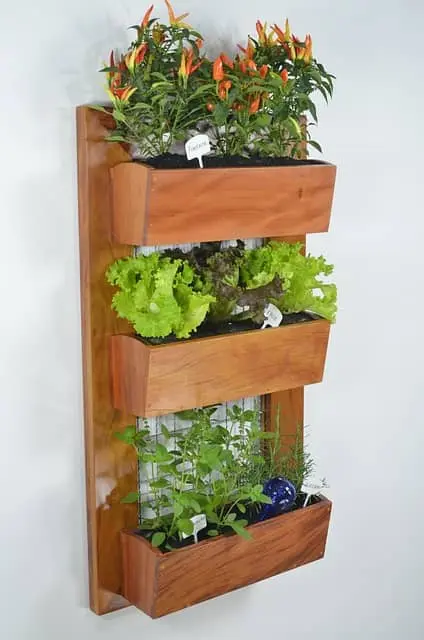Call: (915)365-1515
Email: info@natural-patterns.com
Call: (915)365-1515
Email: info@natural-patterns.com

7/31/2022
Written by Antsmasher
Vertical gardening is a creative and efficient solution for individuals with limited gardening space, whether it’s a small urban balcony or a compact backyard. The concept involves growing plants vertically, making use of walls, trellises, hanging containers, and other vertical structures to maximize the available area. This approach not only enhances the aesthetic appeal of small spaces but also enables gardeners to cultivate a wide variety of plants, from flowers and herbs to vegetables and fruits.
One of the primary advantages of vertical gardening is space optimization. By going vertical, you can turn unused walls and fences into productive garden areas. Vertical gardens can be customized to suit your style and space constraints, making them a versatile choice for gardeners of all levels. For example, you can create a lush green wall with a variety of trailing vines, install a vertical herb garden for easy access to fresh seasonings, or grow compact fruit trees on espaliers along a fence. In addition to saving space, vertical gardening can also help with pest control and disease management, as it can be easier to spot and treat issues in a vertical garden compared to traditional horizontal beds.
Another aspect of vertical gardening is its suitability for indoor spaces. Many indoor gardeners use vertical setups to grow houseplants, succulents, and even small vegetables in apartments or homes with limited floor space and natural light. Vertical gardens can be equipped with grow lights and hydroponic systems for year-round cultivation, making them an excellent choice for those interested in indoor gardening. Overall, vertical gardening offers an innovative and practical approach to gardening that transforms small spaces into lush, productive, and visually appealing landscapes.
Permaculture: Designing Sustainable Ecosystems in Your Backyard
Permaculture, short for “permanent agriculture” or “permanent culture,” is a holistic approach to gardening and landscaping that emphasizes sustainable and regenerative practices. At its core, permaculture seeks to mimic natural ecosystems by designing landscapes that are not only productive but also self-sustaining and resilient. This approach can be applied to any scale, from a small backyard garden to a large farm, with the aim of creating harmony between humans and nature.
One of the fundamental principles of permaculture is “observe and interact.” Permaculture designers carefully study their local environment, climate, and ecosystem dynamics to make informed decisions about plant selection, layout, and maintenance. By understanding the natural patterns and processes at work, permaculturists can create landscapes that require less external inputs like water, fertilizer, and pesticides. For example, a permaculture garden might incorporate features such as swales (ditches that capture and slow water runoff), hugelkultur (raised beds filled with rotting wood and organic matter), and diverse plantings to increase soil fertility and water retention.
Permaculture also places a strong emphasis on biodiversity and the creation of habitat for wildlife. By planting a diverse range of native and edible plants, permaculture gardens can attract beneficial insects, birds, and other wildlife, creating a balanced and resilient ecosystem. Additionally, permaculture design often includes the integration of animals, such as chickens for pest control or bees for pollination, further enhancing the garden’s productivity. Permaculture is a dynamic and evolving approach to gardening and landscaping that encourages continuous learning and adaptation, making it a rewarding practice for those interested in sustainable and regenerative agriculture.